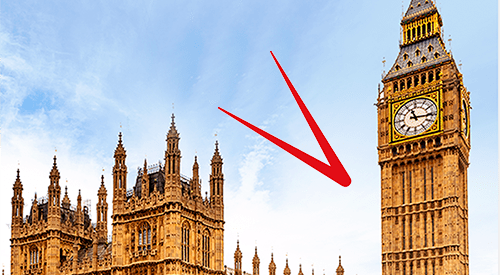
Our chart of the week sets out the changes in fiscal projections calculated by the Office for Budget Responsibility (OBR) in its October 2024 economic and fiscal outlook compared with the numbers at the time of the Spring Budget seven months ago.
These form a revised baseline for the public finances that will form the basis of the Chancellor’s spending and investment plans over the rest of the Parliament.
As our chart highlights, the fiscal deficit – the shortfall between tax and other receipts and public spending calculated in accordance with statistical standards – was forecast to amount to £87bn in 2024/25, but this has increased by £40bn to £127bn, or 4.5% of GDP.
The projections for the following five years were also revised upwards between 2025/26 and 2029/30 have increased from £78bn, £69bn, £51bn, £39bn and £35bn by £28bn, £20bn, £21bn, £33bn and £36bn to result in a revised profile of £106bn (3.6% of GDP), £89bn (2.9% of GDP), £72bn (2.3% of GDP), £72bn (2.2% of GDP) and £71bn (2.1%).
This contrasts with the previous government’s plan to bring down the deficit in relation to the size of the economy to 1.2% of GDP by 2028/29.
Perhaps the biggest surprise was the £40bn upward revision to the budgeted deficit of £87bn for the current financial year ending in March 2025. This reflects a combination of £14bn in higher debt interest and £6bn in other forecast revisions, £23bn in higher spending (most of which is the £22bn ‘black hole’ identified by the incoming government over the summer) and £2bn in additional capital investment, less £1bn in tax measures and £4bn from the indirect economic effect of policy decisions.
In later years, the principal driver of the increases in the deficit is higher capital investment as the Chancellor replaced the previous government’s plan to cut public sector net investment by almost a third over the next five years (from 2.5% to 1.7% of GDP) to a profile that sees net investment increase to 2.7% of GDP in 2025/26 and 2026/27 before returning to 2.5% of GDP in 2029/30.
The changes in the deficit between 2025/26 and 2029/30 can be summarised as follows:
2025/26: £28bn increase = £18bn higher capital investment + £10bn net other changes (£42bn additional spending - £25bn tax rises - £6bn indirect effects of decisions - £1bn forecast changes).
2026/27: £20bn = £23bn capital - £3bn net other changes (£44bn - £35bn - £5bn - £7bn).
2027/28: £21bn = £26bn capital - £5bn net other changes (£47bn - £40bn - £2bn - £10bn)
2028/29: £33bn = £27bn capital + £6bn net other changes (£49bn - £40bn + £2bn - £5bn)
2029/30: £36bn = £25bn capital + £11bn net other changes (£47bn - £42bn + £6bn - not published).
The increases in taxation, spending and capital investment won’t avoid the need for difficult choices in the Spending Review next year as departmental budgets will remain tight.




